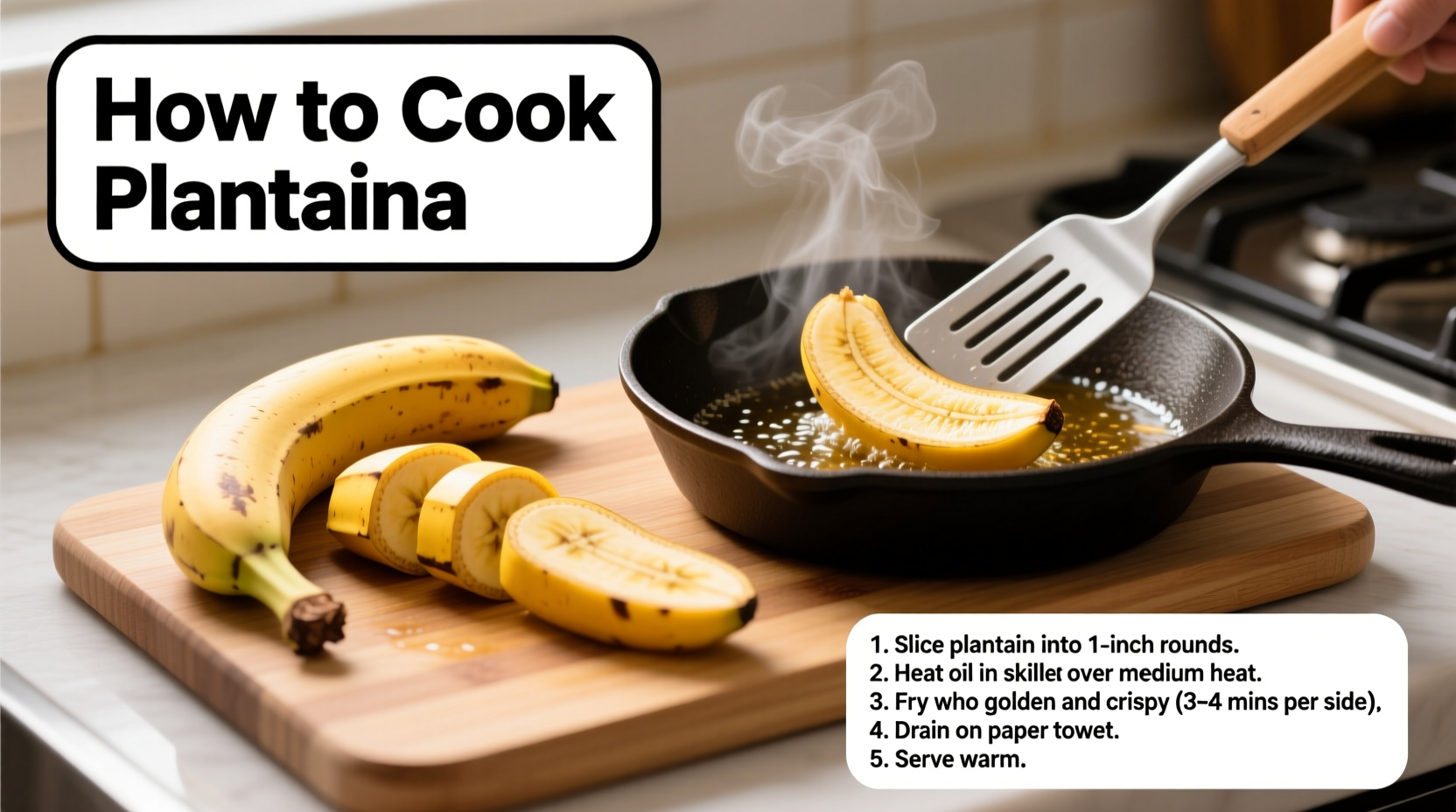Your Complete Guide to Cooking Plantains Like a Pro
Plantains aren't just a side dish—they're a culinary cornerstone across tropical regions worldwide. Whether you're working with firm green plantains or sweet black ones, understanding the preparation process transforms this humble fruit into restaurant-quality dishes at home. This guide delivers precise techniques that account for ripeness variations, safety considerations, and flavor optimization that most online recipes overlook.
Step 1: Selecting the Right Plantain for Your Recipe
Your cooking success begins at the grocery store. Unlike bananas, plantains require specific ripeness stages for different preparations. Here's how to choose:
| Ripeness Stage | Appearance | Best Cooking Methods | Flavor Profile |
|---|---|---|---|
| Green (Unripe) | Solid green skin, firm texture | Frying (tostones), boiling, baking | Starchy, neutral, similar to potatoes |
| Yellow (Semi-Ripe) | Mostly yellow with some green spots | Pan-frying, grilling | Mild sweetness with starchy base |
| Black (Fully Ripe) | Completely blackened skin, soft texture | Frying (maduros), baking | Naturally sweet, caramel-like flavor |
According to agricultural research from the UN Food and Agriculture Organization, plantains contain about 30% starch when green, which converts to sugars as they ripen. This biochemical transformation explains why green plantains behave like vegetables while ripe ones function as fruits in cooking applications.
Step 2: Proper Peeling Techniques (Avoiding Common Mistakes)
Peeling plantains correctly prevents bruising and makes preparation efficient. The method varies significantly based on ripeness:
- Green plantains: Cut ends, make shallow lengthwise incisions through skin, then pry open with fingers. The tough skin won't peel like bananas.
- Yellow plantains: Cut ends and score skin lengthwise before peeling.
- Black plantains: Peel carefully as flesh becomes very soft—often easiest to cut lengthwise and scoop out flesh.
Food safety experts at the Centers for Disease Control and Prevention recommend washing plantains under running water before peeling to prevent transferring surface contaminants to the flesh during preparation.
Step 3: Essential Cooking Methods for Perfect Results
Frying Green Plantains for Crispy Tostones
This traditional Caribbean preparation creates twice-fried, crispy plantain patties:
- Cut peeled green plantains into 1-inch chunks
- Fry in 350°F (175°C) oil for 5-6 minutes until tender
- Remove and flatten to ½-inch thickness using a tostonera or glass bottom
- Refry for 2-3 minutes until golden and crispy
- Season immediately with salt and serve with mojo sauce

Preparing Sweet Maduros with Black Plantains
Ripe plantains caramelize beautifully when fried correctly:
- Cut peeled black plantains diagonally into ½-inch slices
- Heat oil to 325°F (160°C)—lower temperature prevents burning sugar
- Fry for 3-4 minutes per side until deeply golden
- Drain on paper towels and sprinkle with flaky sea salt
- Serve immediately while still warm
USDA nutritional data shows that ripe plantains contain approximately 122 calories per 100g, with significant potassium (31% of daily value) and vitamin C (19% of daily value), making them a nutrient-dense alternative to traditional starches.
Step 4: Avoiding Common Plantain Cooking Mistakes
Even experienced cooks make these critical errors that ruin plantain dishes:
- Incorrect oil temperature: Green plantains need higher heat (350°F) while ripe ones require lower (325°F) to prevent burning
- Overcrowding the pan: Causes oil temperature to drop, resulting in soggy plantains
- Seasoning too early: Salt draws out moisture—always season immediately after frying
- Using the wrong ripeness: Green plantains won't caramelize properly, while black ones won't hold shape for tostones
Step 5: Creative Serving Suggestions Beyond Basic Sides
Elevate your plantain dishes with these professional chef techniques:
- Add a pinch of cinnamon to sweet maduros for dessert applications
- Mash boiled green plantains with garlic for a healthier alternative to mashed potatoes
- Create plantain chips by thinly slicing green plantains and baking at 300°F for 15-20 minutes
- Use ripe plantains in smoothies for natural sweetness and creaminess
Storage and Food Safety Considerations
Proper storage extends plantain usability and prevents waste:
- Store unripe plantains at room temperature away from direct sunlight
- Slow ripening by refrigerating—skin will darken but flesh remains usable
- Cooked plantains keep for 3-4 days refrigerated in airtight containers
- Freeze sliced cooked plantains for up to 3 months (thaw before reheating)
The USDA Food Safety and Inspection Service recommends cooking plantains to an internal temperature of 165°F (74°C) when incorporating them into mixed dishes for food safety, though standalone fried plantains typically reach this temperature during proper frying.
Plantain Cooking FAQ
Here are answers to the most common plantain preparation questions:
Can you eat plantains raw?
No, raw plantains are difficult to digest and have an unpleasantly starchy, astringent taste. Unlike bananas, plantains require cooking to become palatable and digestible. Green plantains especially contain high levels of resistant starch that breaks down during cooking.
Why are my fried plantains turning out soggy?
Soggy plantains usually result from incorrect oil temperature. If oil is too cool (below 325°F), plantains absorb excess oil. If overcrowded, the temperature drops too much. Always maintain proper oil temperature and fry in small batches for crisp results. Drain immediately on wire racks, not paper towels, to prevent steaming.
How do you prevent plantains from browning too quickly when frying?
For ripe plantains, use a lower frying temperature (325°F instead of 350°F). The natural sugars caramelize quickly and can burn. Also, avoid adding sugar during cooking as this accelerates browning. Cut uniform pieces for even cooking and don't move them excessively in the oil during the first minute of frying.
What's the difference between plantains and bananas?
Plantains are starchier, larger, and have thicker skin than bananas. They contain less sugar when unripe and must be cooked before eating, while bananas are typically eaten raw. Plantains maintain their structure when cooked, making them suitable for savory dishes, whereas bananas become too soft. Botanically, they're different cultivars within the same genus.











 浙公网安备
33010002000092号
浙公网安备
33010002000092号 浙B2-20120091-4
浙B2-20120091-4